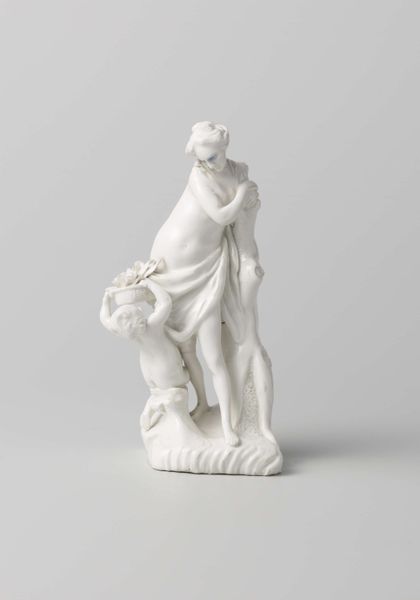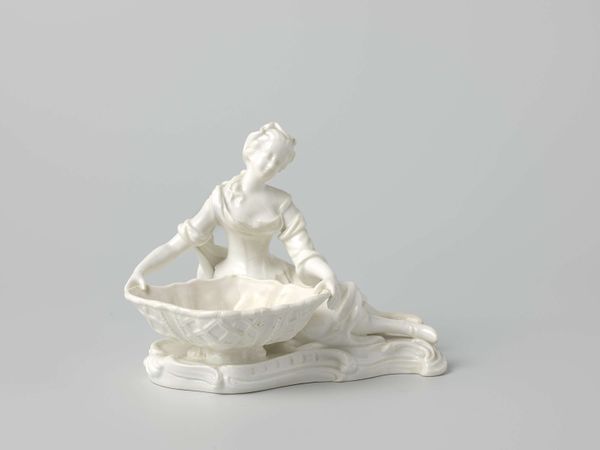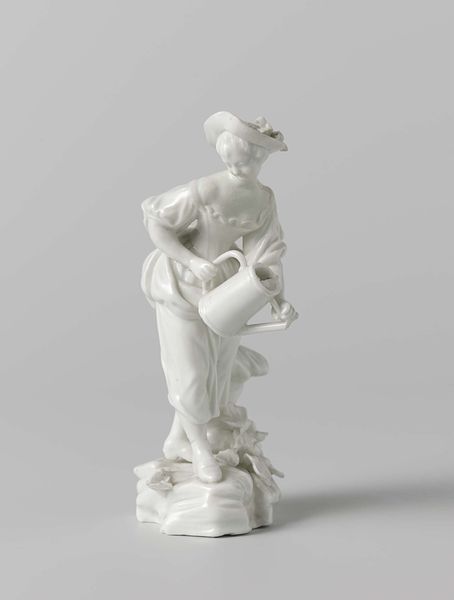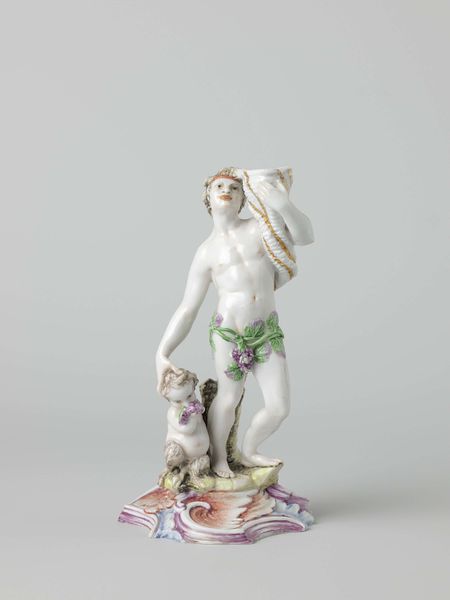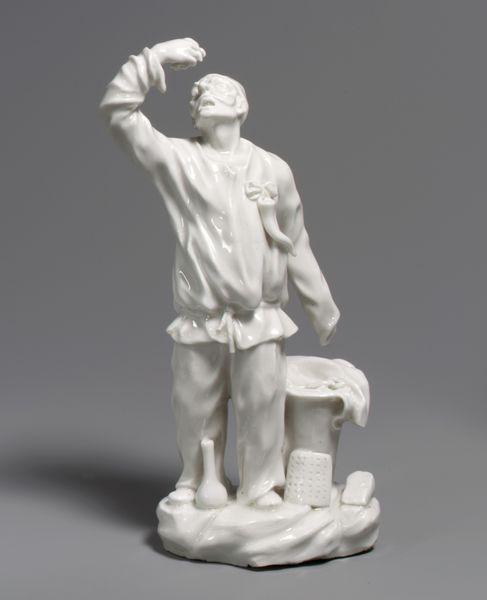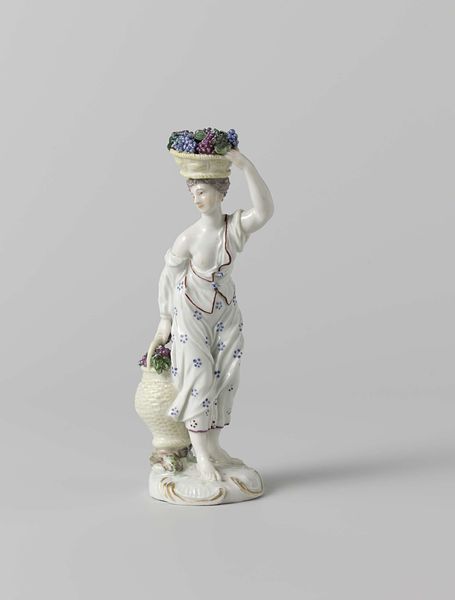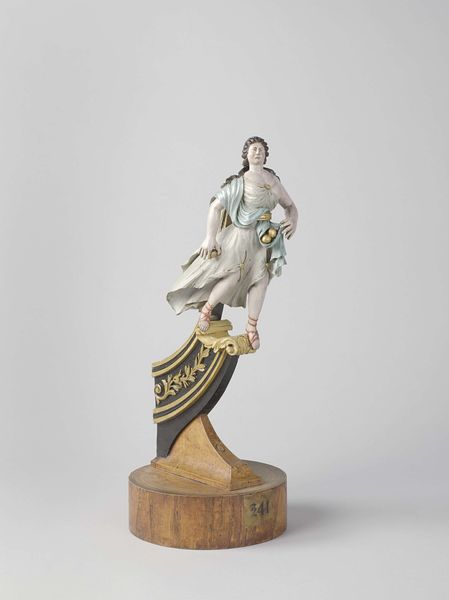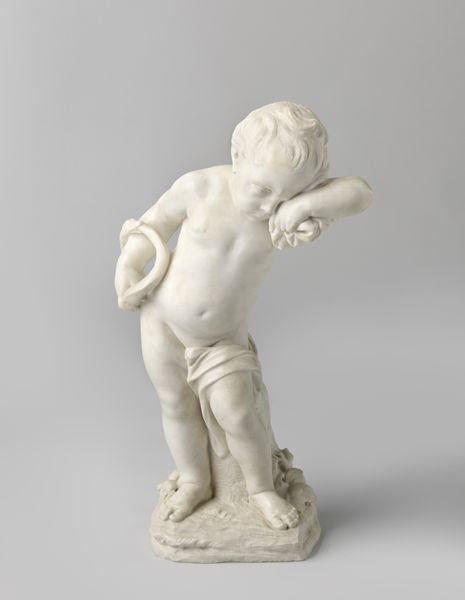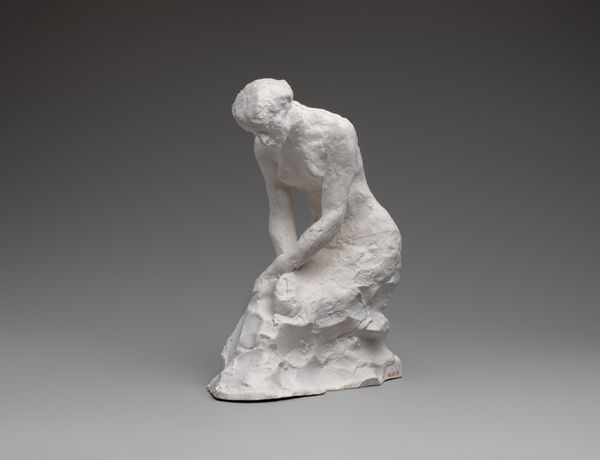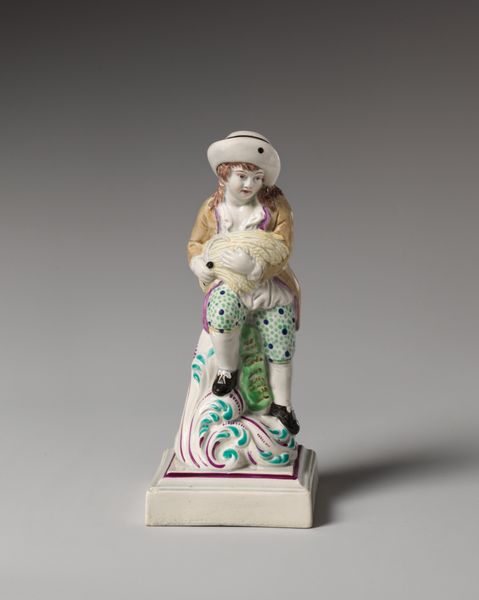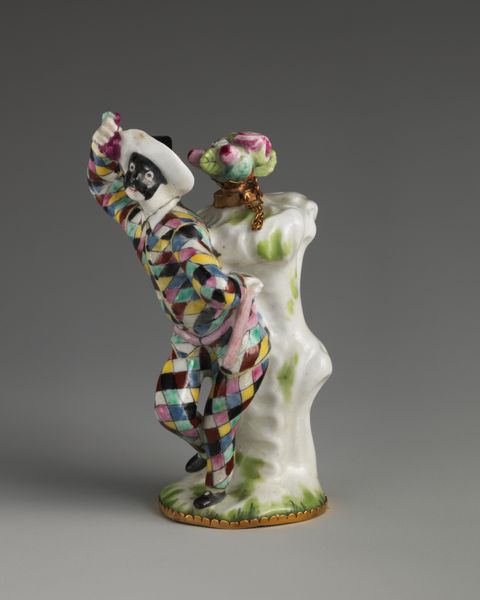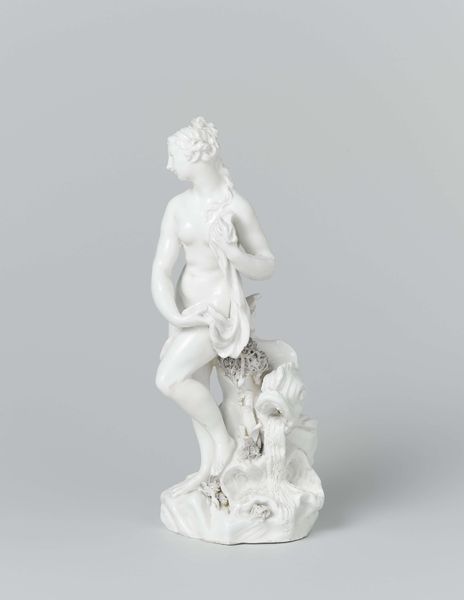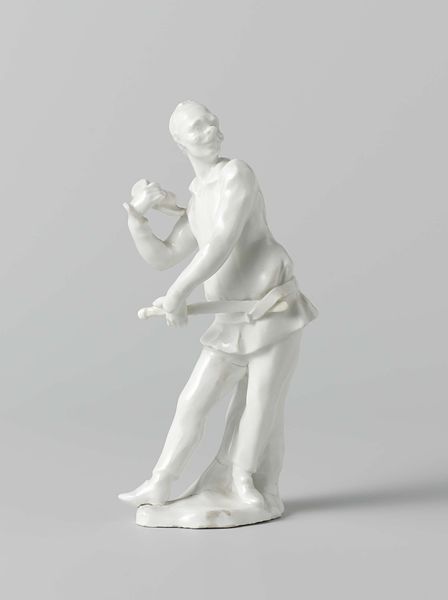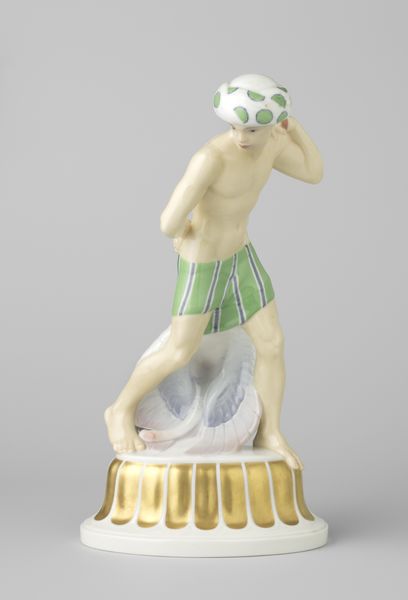
ceramic, porcelain, sculpture
#
portrait
#
ceramic
#
porcelain
#
figuration
#
sculpture
#
decorative-art
#
rococo
Dimensions: Overall (wt. confirmed): 7 9/16 × 3 × 2 5/8 in., 1 lb. (19.2 × 7.6 × 6.7 cm, 0.5 kg)
Copyright: Public Domain
Curator: Let's spend a moment with Joseph Willems’ porcelain sculpture, "Figure of a Beggar," created sometime between 1749 and 1759. It resides here at the Metropolitan Museum of Art. Editor: It strikes me immediately as a curious mix. The elegant material, that gleaming porcelain, juxtaposed with the intended subject matter of poverty. The contrast creates an interesting tension. Curator: Indeed. The Rococo period often used art to elevate and prettify, even when depicting more humble subjects. This piece speaks volumes about the way the elite viewed the less fortunate—almost as a curiosity to be displayed within their homes. Consider the decorative arts prevalent at the time; porcelain figurines were luxury goods. Editor: And the pose itself contributes to that feeling. He's not begging, not directly. He’s standing, almost nonchalantly, as if observing. There's an inherent artistic self-awareness. His crossed arms frame his torso drawing attention to his form; but also it adds dynamism to an otherwise static figure. Curator: It also underscores a common practice, doesn’t it? A kind of performative charity. To see a beggar elevated to a figurine meant those with privilege could signal their empathy without truly confronting social inequalities. Editor: You’re right, it's quite layered. There's a subtle, perhaps unintentional, irony in presenting a symbol of poverty in a form so indicative of wealth. I almost want to say he has swagger. The turn of his head suggests nobility as if he knows his purpose beyond simple poverty. It almost feels disrespectful to the sitter, in the process of beautification for the home. Curator: Precisely! It brings up critical questions about our role in observing suffering, especially through an artistic lens, then and now. What did people really think? Were they making this for the sake of pure enjoyment, or did this perhaps provoke any introspection? It gives great nuance to what porcelain, Rococo art can achieve when given consideration of these social layers. Editor: Well, I’m left pondering the interplay between artistic intent, material connotations, and socio-economic commentary embedded in this beautiful yet disquieting figurine. I like that the sculpture provokes questions regarding its intentions rather than offering answers about that era of time. Curator: A valuable lesson in observing beyond the surface of decorative art. It's beautiful, but challenging as well, and provides interesting context regarding wealth, class, and social change in this time period.
Comments
No comments
Be the first to comment and join the conversation on the ultimate creative platform.
